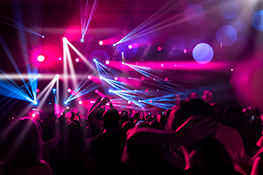Intelligent Lighting Systems: The Future of Automated Stage Effects
The Evolution of Stage Lighting
Stage lighting has come a long way from the simple spotlights of yesteryear. The transition from static illumination to dynamic, programmable lighting has revolutionized theatrical productions, concerts, and corporate events. This evolution has been driven by technological advancements, particularly the rise of intelligent lighting systems.
What are Intelligent Lighting Systems?
Intelligent lighting systems, also known as automated lighting systems, are fixtures equipped with sophisticated features that allow for precise control and complex movement. These systems go beyond basic dimming and color changing; they offer pan and tilt functionality, gobo projection, color mixing, and often, integrated effects.
Key Features of Intelligent Lights
The capabilities of intelligent lighting systems are extensive, setting them apart from traditional lighting instruments. Key features include:
Precise Pan and Tilt Movement
Intelligent lights can be precisely positioned to illuminate specific areas of the stage, creating dynamic and dramatic effects. Programmable movements allow for smooth transitions and intricate choreography.
Color Mixing Capabilities
Many intelligent lights offer CMY (Cyan, Magenta, Yellow) or CMYK (adding Key/Black) color mixing, enabling the creation of virtually any color imaginable. This eliminates the need for a vast array of color filters, simplifying setup and increasing flexibility.
Gobo Projection
Gobos, or gobo patterns, are metal or glass templates placed in front of a light source to project images or patterns onto the stage. Intelligent lights often incorporate gobo wheels, enabling quick and easy changes of projected designs, enhancing the visual storytelling.
Built-in Effects
Many intelligent lights incorporate pre-programmed effects such as strobes, chases, and color washes, simplifying the creation of complex light shows. These effects can be customized and layered for unique results.
Advanced Control Protocols
Intelligent lighting systems communicate using industry-standard protocols such as DMX512, allowing them to be controlled by dedicated lighting consoles. This enables complex programming and precise synchronization across multiple fixtures.
Benefits of Using Intelligent Lighting Systems
The advantages of adopting intelligent lighting are substantial, leading to improved efficiency and enhanced creative expression:
Increased Efficiency
Fewer fixtures are often needed compared to traditional lighting setups. The precision control and versatile features of intelligent lights minimize the need for manual adjustments and multiple lighting instruments.
Enhanced Creativity
Intelligent lighting systems open up a vast array of creative possibilities. The dynamic movement, precise color control, and gobo projection capabilities allow designers to create stunning and immersive visual experiences.
Cost Savings
Although the initial investment in intelligent lighting can be higher, the long-term cost savings from reduced labor, fewer fixtures, and simplified setup often outweigh the initial expense.
Simplified Setup and Operation
The centralized control offered by lighting consoles simplifies the operation of intelligent lighting systems, making programming and execution more streamlined.
The Future of Intelligent Lighting
The field of intelligent lighting is constantly evolving. Future developments are likely to include increased integration with other stage technologies, improved energy efficiency, more sophisticated control protocols, and even greater creative capabilities. The use of AI and machine learning to automate even more aspects of lighting design is also a possibility.
Conclusion
Intelligent lighting systems are transforming the stage lighting industry, offering unprecedented levels of control, creativity, and efficiency. As technology advances, these systems will continue to play an increasingly vital role in shaping the future of stage productions and events.


 Auditorium Construction Services
Auditorium Construction Services 